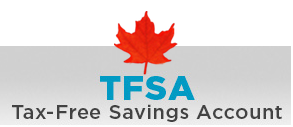
Is it better to hold high interest savings or stocks and index funds in your TFSA? Let’s analyze:
For simplicity, you have $5000 contribution room this year for your TFSA.
Let’s say you managed to save up $10000, an impressive feat. You want a 50/50 ratio of cash savings to stocks/funds. Thus, you want $5000 in cash earning interest while you are ready to invest the other $5000.
Scenario 1: You put $5000 of stocks in your TFSA and $5000 in a Non-Registered high interest savings account earning 3% interest.
If your stocks appreciate by 7%, then you will gain:
$5000 x 0.07 = $350 (capital gains in TFSA)
$5000 x 0.03 = $150 (pretax interest)
$5000 x (0.03 x 0.70 ) = $105 (after tax interest)
*Assuming your marginal tax rate is 30% and your capital gains tax rate is half the amount (15%).
Net Gain: $350 + $105 = $455
Scenario 2: You put $5000 of stocks in your Non-Registered Account and $5000 in a TFSA High Interest Savings Account earning 3% interest.
Again, if your stocks appreciate by 7%, then you will gain:
$5000 x 0.07 = $350 (capital gains pretax)
$5000 x (0.07 x 0.85) = $297 (capital gains after tax)
$5000 x 0.03 = $150 (high interest TFSA)
Net Gain: $297 + $150 = $447
Conclusion: TFSA is best used to fund stocks. The expected capital gains from stocks will outpace whatever minimal interest you get from an High Interest account.
“But Savvy Buck!” You cry, “We are in a historically low interest environment! What if interest rate rises?”
So you might ask: At what interest rate should the TFSA be used to hold interest savings account?
Well, assuming your marginal tax rate is 30%, the formula is the following:
x is capital gains and y is interest income,
x + 0.7y = 0.85x + y
0.15x = 0.3y
x = 2y
If interest rate is more than half of the rate of capital gains (e.g. 3.6% interest vs 7% expected capital gains), then it is worthwhile to fund your TFSA with interest bearing accounts. This makes complete sense since capital gains is taxed at half the amount compared to interest.